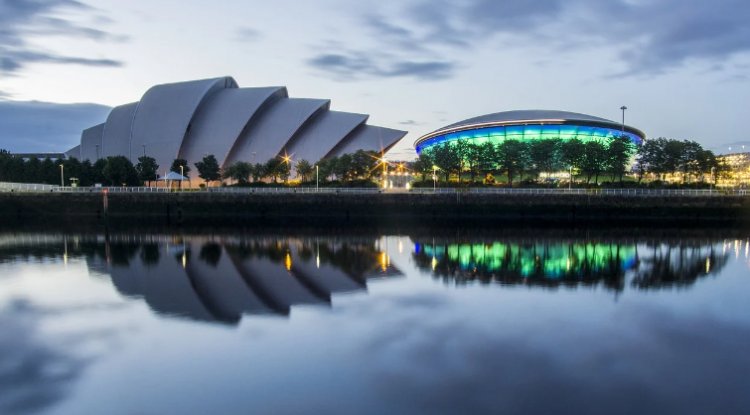Iceland’s Hidden Marvels: Discovering Nature Beyond the Blue Lagoon
Iceland, a land of extremes, is celebrated for its geothermal delights, particularly the Blue Lagoon. However, this striking spa is just a glimpse into a country teeming with unparalleled natural wonders. From dramatic waterfalls to eerie lava fields and awe-inspiring glaciers, Iceland's rugged terrain offers a treasure trove of experiences for those willing to look beyond the well-trodden path.
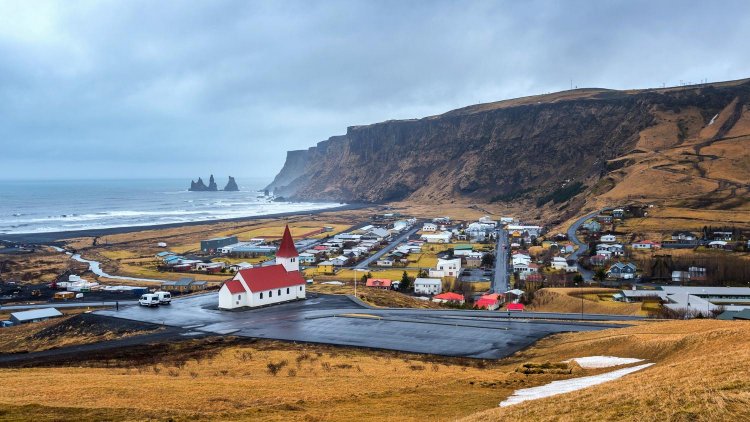
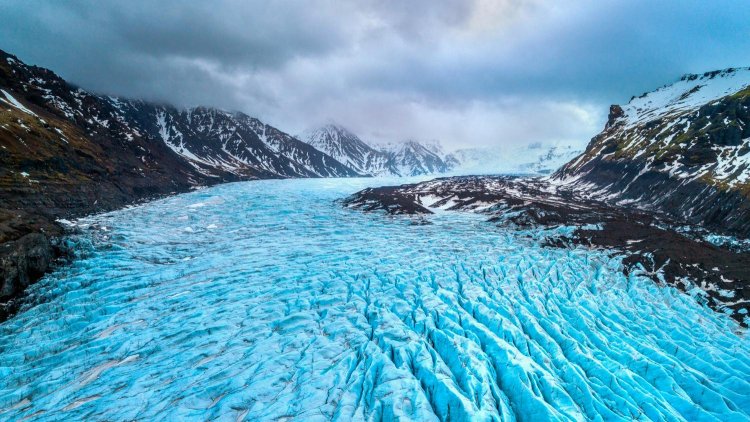
Glistening Glaciers and Ice Caves
Iceland’s glaciers are the country's crowning jewels, each offering a unique window into the icy heart of this Nordic island. The Vatnajökull Glacier, one of Europe’s largest, spans a vast 8,100 square kilometers. Its ice cap is a labyrinth of frozen wonders, with ice caves that sparkle with an ethereal blue hue. These ice caves, formed from meltwater and compressed snow, create an otherworldly landscape that changes annually, making every visit a new adventure.
The glacier's outlet tongues reach down into lush valleys, where you can explore the stark contrast between ice and volcanic rock. The Svínafellsjökull Glacier, a part of Vatnajökull, is particularly famed for its stunning crevasses and deep blue ice formations. Guided tours offer a chance to venture into these icy realms, but it's crucial to be accompanied by a professional due to the potential hazards of glacier travel.
In addition to Vatnajökull, the Langjökull Glacier, Iceland’s second-largest, also holds intriguing ice caves and offers snowmobiling adventures across its frozen surface. Its expansive ice fields provide a different perspective of Iceland’s icy beauty and are a must-see for those who seek adventure off the beaten path.
Enigmatic Lava Fields
Iceland’s volcanic activity has sculpted a landscape of dramatic lava fields, creating an almost alien terrain that fascinates geologists and travelers alike. The Reykjanes Peninsula, with its otherworldly lava fields, is a prime example. The area is characterized by its rugged and raw appearance, with blackened landscapes dotted with moss-covered lava formations. A visit to the Fagradalsfjall Volcano, which erupted recently, offers an opportunity to witness the raw power of Iceland’s volcanic forces.
Another intriguing lava field is the Eldhraun Lava Field in southern Iceland, formed by one of the largest volcanic eruptions in history. The moss-covered lava formations here create an otherworldly landscape that is both haunting and beautiful. This area is ideal for hiking, providing an immersive experience into Iceland’s volcanic history.
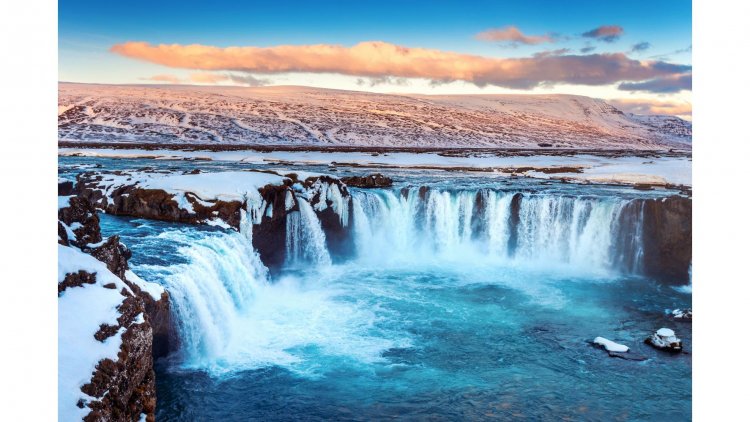
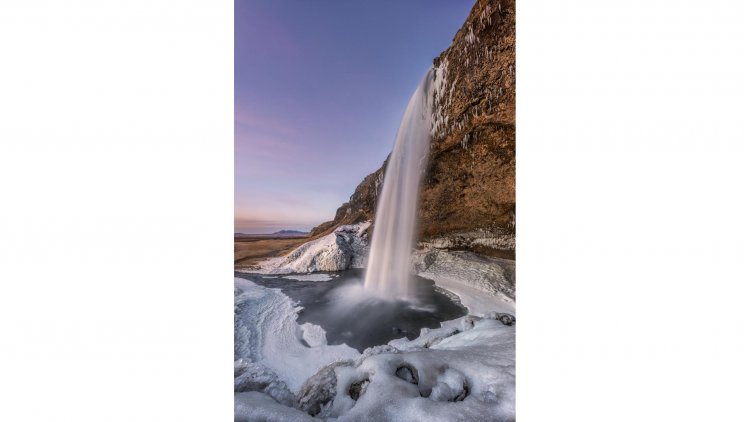
Majestic Waterfalls
Iceland is renowned for its stunning waterfalls, each unique in its own right. Gullfoss, often referred to as the "Golden Falls," is a majestic two-tiered waterfall located in the Golden Circle. Its powerful cascade, combined with the surrounding rugged landscape, makes it one of the most photographed waterfalls in Iceland.
Seljalandsfoss is another iconic waterfall, famous for the unique experience it offers—visitors can walk behind the falling water for an incredible view from within the waterfall's curtain. Nearby, Gljúfrabúi is a hidden gem, partially obscured by a cliff, adding a sense of mystery and wonder to the experience.
Skógafoss, located in the southern part of Iceland, is one of the largest waterfalls in the country, with a drop of 60 meters and a width of 25 meters. The sheer volume of water creates a constant mist, often resulting in beautiful rainbows on sunny days. For those seeking a bit of adventure, the hike up to the top of Skógafoss offers a spectacular panoramic view of the surrounding landscape.
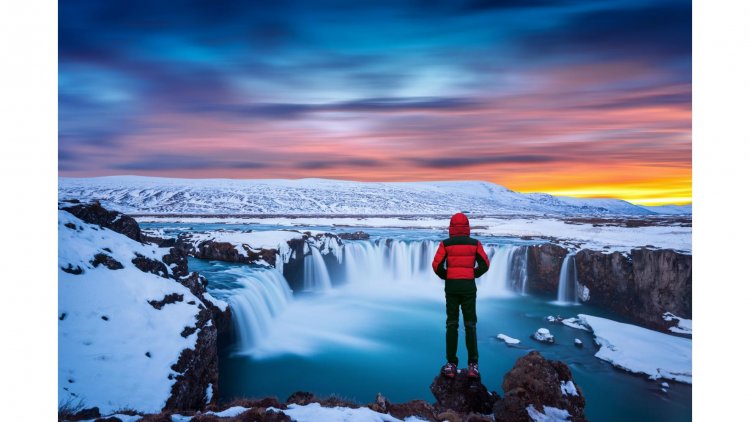
The Aurora Borealis: Iceland’s Celestial Spectacle
No visit to Iceland would be complete without witnessing the Northern Lights, a celestial phenomenon that draws travelers from around the globe. Iceland’s remote location and clear skies provide an ideal setting for this natural light show, which is most visible from September to April.
The Aurora Borealis, or Northern Lights, is a result of charged particles from the sun interacting with the Earth’s magnetic field. The lights can appear in various colors, ranging from green to pink, red, and even violet. While Reykjavik offers opportunities to see the lights, venturing into the countryside away from city lights enhances the experience. The Þingvellir National Park, located in the Golden Circle, is a popular spot for Northern Lights viewing, providing both a dark sky and a stunning backdrop of Iceland’s geological features.
In the north, Akureyri and the surrounding areas offer excellent opportunities to see the Aurora Borealis, especially during the colder months when the skies are clearer. The combination of dark, clear skies and minimal light pollution creates perfect conditions for witnessing this breathtaking natural spectacle.
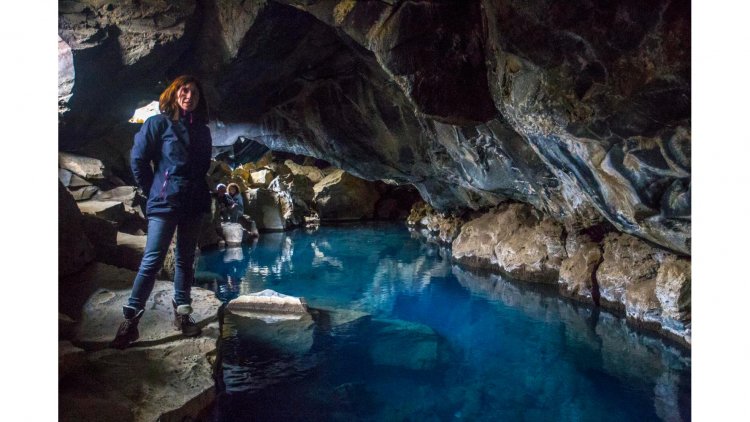
Geothermal Wonders: Beyond the Blue Lagoon
While the Blue Lagoon is the most famous geothermal spa in Iceland, there are numerous other geothermal wonders that offer unique and less crowded experiences. The Mývatn Nature Baths, located in northern Iceland, provide a similar soothing experience in a more secluded setting. The mineral-rich waters, surrounded by volcanic landscapes, offer a tranquil alternative to the more tourist-centric Blue Lagoon.
The Secret Lagoon, located in the town of Flúðir, is another hidden gem. It’s one of the oldest geothermal pools in Iceland, with a natural feel that contrasts with the more developed Blue Lagoon. The pool is surrounded by geothermal features, including bubbling mud pools and steam vents, adding to its natural charm.
For those seeking adventure combined with relaxation, the Reykjadalur Valley offers a unique experience. Known as the "Steam Valley," this area is home to hot springs that you can bathe in after a scenic hike through a valley filled with geothermal activity. The hot river provides a natural spa experience in a stunning wilderness setting.
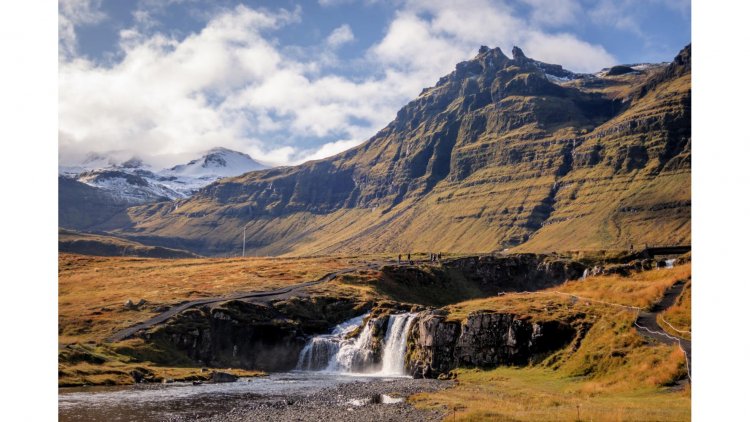
Dramatic Coastal Landscapes
Iceland’s coastline is as varied as its interior landscapes, featuring dramatic cliffs, black sand beaches, and striking rock formations. Reynisfjara Beach, near the town of Vík, is famous for its black sand and towering basalt columns. The beach’s otherworldly landscape, combined with the roaring Atlantic waves, creates a stark and beautiful scene.
Dyrhólaey, a promontory near Vík, offers panoramic views of the surrounding coastline and the chance to see puffins during the summer months. The area’s dramatic arches and cliffs add to its appeal, providing fantastic photo opportunities and a chance to experience Iceland’s rugged coastal beauty up close.
Iceland’s natural wonders extend far beyond the famed Blue Lagoon, offering a diverse range of experiences for those who venture off the beaten path. From the icy realms of glaciers and mesmerizing ice caves to the enigmatic lava fields and majestic waterfalls, the country’s landscapes are as varied as they are breathtaking. The chance to witness the Northern Lights and explore lesser-known geothermal baths further enhances Iceland’s appeal, providing a rich tapestry of natural beauty and adventure. Each corner of this island nation offers its own unique charm, making Iceland a destination where the spirit of exploration truly comes alive.
Whispering Winds and the Volcanic Heart: Iceland’s Hidden Treasures
As Iceland emerges from its mythic veil of the Blue Lagoon’s warmth, the true essence of its wild and untamed nature unfolds. The island’s volcanic soul, icy enchantments, and natural splendor beckon explorers to delve deeper into its hidden wonders. Beyond the popular attractions, Iceland's lesser-known gems offer a profound and exhilarating experience for those who seek the thrill of discovery.
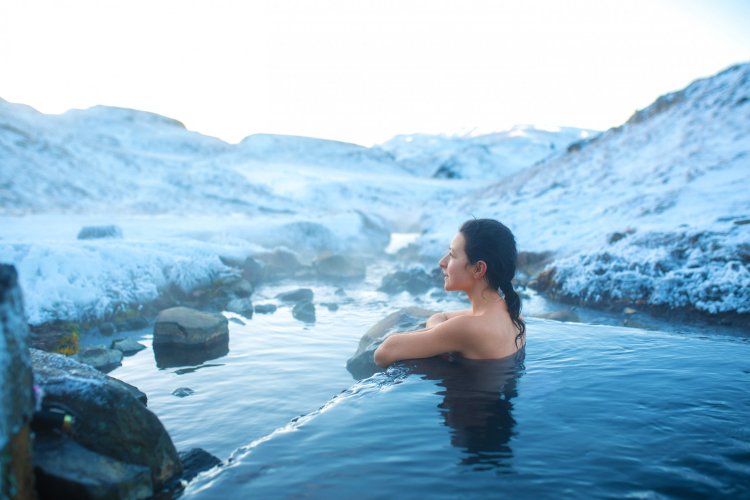
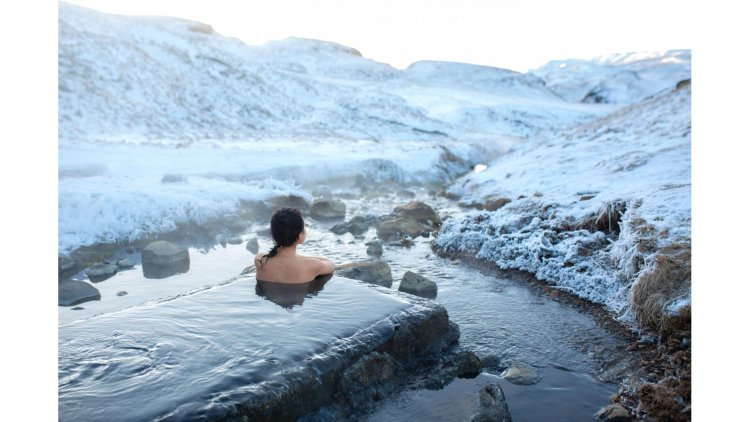
Radiant Hot Springs and Healing Waters
The allure of Iceland’s geothermal activity extends well beyond the renowned Blue Lagoon. Among the most captivating of these natural spas are the Landmannalaugar hot springs, nestled in the heart of the Icelandic Highlands. This area, known for its colorful rhyolite mountains and expansive lava fields, offers a unique experience. After a day of hiking through the vibrant terrain, soaking in the natural hot springs surrounded by stunning landscapes provides a perfect end to the day.
The geothermal region of Hveravellir, situated in the central highlands, is another hidden treasure. This remote area offers both a natural hot spring and incredible views of the surrounding wilderness. The Hveravellir Hot Springs are less frequented by tourists, providing a serene setting where you can soak in warm, mineral-rich waters while enjoying the tranquility of the highland environment.
The Land of Ice and Fire: Exploring Volcanoes
Iceland’s volcanic activity is a defining feature of its landscape, and exploring its volcanoes offers a glimpse into the planet’s raw power. One of the most accessible and visually striking volcanic sites is the Krafla volcanic system, located in the Mývatn region. The area features a range of volcanic phenomena, including steaming fumaroles, boiling mud pots, and colorful geothermal craters. The Krafla Caldera, with its dramatic volcanic landscape, offers hikers an opportunity to witness the dynamic processes shaping Iceland’s terrain.
The Fimmvörðuháls volcanic area, located between the Mýrdalsjökull and Eyjafjallajökull glaciers, is another must-visit site for volcano enthusiasts. This area gained fame during the 2010 eruption of Eyjafjallajökull, which disrupted air travel across Europe. Today, it offers an incredible hiking route that takes you past volcanic craters, lava fields, and the spectacular waterfall of Skógafoss, providing a comprehensive volcanic experience.
The Enchanting East Fjords
While many visitors flock to Iceland’s Golden Circle and south coast, the East Fjords offer a quieter and equally stunning experience. The fjords are characterized by their dramatic coastal scenery, quaint fishing villages, and rugged mountain terrain. Seyðisfjörður, a charming village located at the end of a fjord, is known for its colorful wooden houses and picturesque setting. It serves as a gateway to exploring the East Fjords’ natural beauty.
Hiking opportunities abound in the East Fjords, with trails offering breathtaking views of the fjords and surrounding mountains. The area is also known for its diverse wildlife, including reindeer and a variety of bird species. The remote and less-visited nature of the East Fjords makes it a perfect destination for those looking to escape the crowds and immerse themselves in Iceland’s serene landscapes.
The Mystical Westfjords
The Westfjords, one of Iceland’s most remote and rugged regions, offer an adventurous and off-the-beaten-path experience. The Hornstrandir Nature Reserve, located at the northern tip of the Westfjords, is a protected area known for its dramatic cliffs, pristine beaches, and diverse wildlife. It is a paradise for hikers and nature enthusiasts, offering trails that lead through untouched landscapes and provide opportunities to spot Arctic foxes and seabirds.
Dynjandi, also known as Fjallfoss, is one of the most spectacular waterfalls in Iceland and a highlight of the Westfjords. The waterfall is a series of cascades that flow down a wide, fan-shaped cliff, creating a stunning visual display. The surrounding area offers several hiking trails that provide panoramic views of the waterfall and the rugged terrain of the Westfjords.
The Golden Circle’s Hidden Gems
While the Golden Circle is well-trodden, it holds its own hidden gems that offer a more intimate connection with Iceland’s natural beauty. The Kerið Crater Lake, located near the town of Selfoss, is a striking volcanic caldera filled with blue water. The vibrant red and green slopes of the crater contrast beautifully with the blue lake, creating a picturesque setting.
Þingvellir National Park, a key site in Iceland’s geological and historical heritage, is more than just a stop on the Golden Circle. The park is situated in a rift valley where the North American and Eurasian tectonic plates meet, creating dramatic geological features. The Almannagjá Gorge and the Öxarárfoss waterfall are notable highlights, and the park’s unique landscape provides ample opportunities for exploration.
Unveiling Iceland’s Southern Coast
Iceland’s southern coast is renowned for its stunning landscapes, but it also holds lesser-known treasures. The Sólheimasandur Plane Wreck is an iconic site on the black sand beach near Vík. The wreckage of a U.S. Navy DC-3 airplane, which crash-landed in 1973, has become a popular photographic subject against the stark and dramatic backdrop of the Icelandic coastline.
Another hidden gem is the Fjaðrárgljúfur Canyon, a magnificent and narrow canyon carved by glacial meltwater. The canyon’s winding paths and steep walls create a mesmerizing scene, and the hiking trail along its rim provides breathtaking views of the canyon’s depths.
Embracing Iceland’s Untamed Beauty
Iceland’s allure lies not just in its well-known attractions but in the lesser-explored corners that reveal the country’s true essence. From the remote highlands and volcanic landscapes to the tranquil hot springs and majestic fjords, Iceland offers an abundance of natural wonders that captivate and inspire. Each journey into Iceland’s diverse landscapes uncovers a new facet of its untamed beauty, making it a destination where adventure and serenity coexist in harmony.
Disclaimer: The information provided in this article is for educational purposes only and should not be considered medical advice. If you have any health concerns or are experiencing symptoms, it is important to consult with a healthcare professional, such as a doctor or clinic, for proper diagnosis and treatment. Always seek the advice of your doctor or other qualified health provider with any questions you may have regarding a medical condition. Do not disregard professional medical advice or delay in seeking it because of something you have read in this article.
What's Your Reaction?







